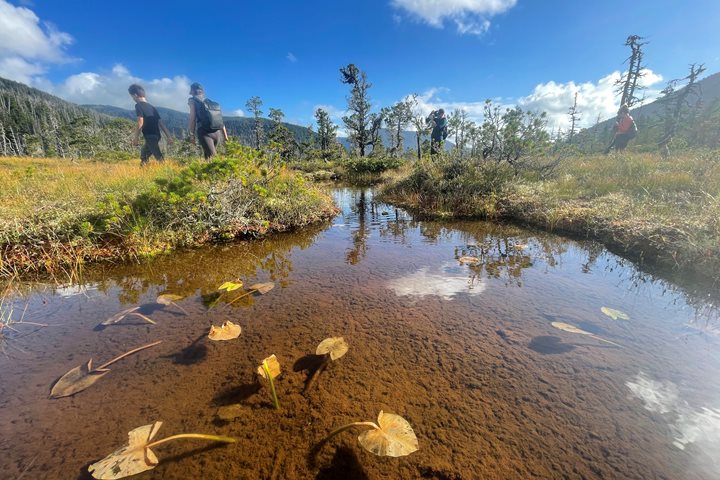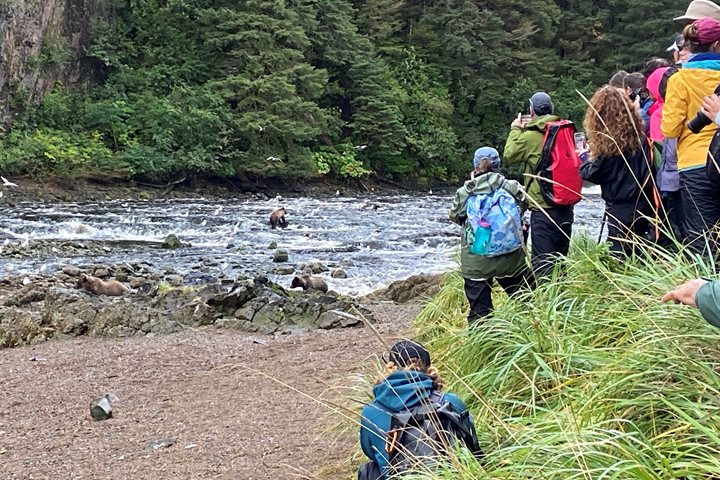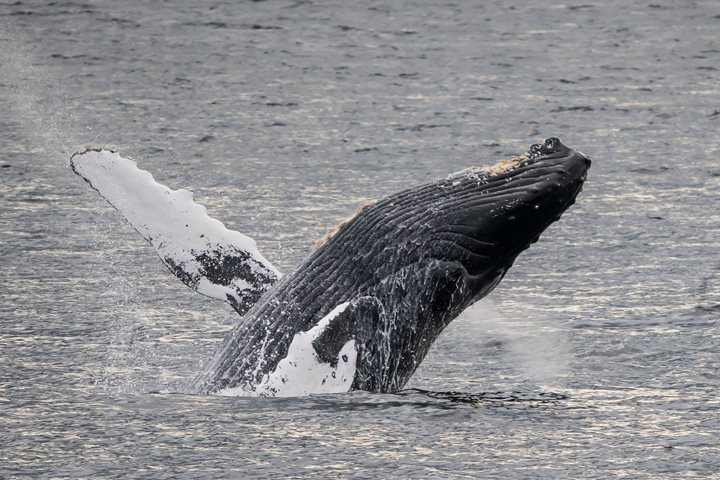A small archipelago guards the south edges of Cross Sound, most of the Inian Islands appear anonymous on the charts, their names either long forgotten or perhaps never granted. One small island, however was named George by W.H. Dall of the USC&GS in 1880. Research has failed to discover who exactly “George” was, but the diminutive little islet that bears his name was explored this morning by the guests and staff of the National Geographic Sea Bird.
Low clouds hovered and wafted through the pines, turning our landing into a scene from a Gothic novel. Up on high branches, hermit thrushes scolded our visit and asserted their claim to territory while the first round of kayaks began a misty sojourn from beach.
George Island has a fabulous network of well-maintained trails that offer something for every level of ambition, from strenuous to leisurely. An easy 200 meter walk from the landing brings one across the island’s isthmus, to a broad sandy beach that faces towards the west. Here, the rock cliffs have endured centuries of the Pacific Ocean’s relentless pounding. The erosion is slow, but eventually, the waves will win the battle. In the meantime, tide pools are home to countless creatures living on the daily cycle of submersion and exposure.
The remains of a human battle are here too - a battleship gun, crumbling sheds, broken buildings - rusting reminders from a WWII encampment. Unlike the fallen trees, these things will not contribute to the old growth ecosystem.
Around a corner, up a small hill and in a tiny grove, someone has hung a swing at the edge of the beach! What a delight to sit for a minute and simply enjoy a breeze of your own making, the sight of the bay below, and the smell of a rich, healthy forest.
After lunch, the cloudy skies finally reach their saturation point, and rain begins to fall. Our enthusiasm is undaunted, and the afternoon DIB cruise is launched as planned. The drivers know the places to look for wildlife, places like “Mosquito Pass” and “The Hobbit Hole.” Steller sea lions take advantage of the incoming tide, gorging on the salmon swept in from the Pacific. The sea lions seem curious about our DIBs, poking their huge dog-like heads above the waves to inspect the boats, then dash quickly below the water, perhaps realizing that we were neither a threat nor a source of food.
Near the rocks, around the Bull Kelp, numerous sea otters entertain us simply with their presence. They are not nearly as bold as the giant Steller sea lions, but far more adorable. So we keep our distance as they swim on their backs, eating and preening and foraging in the calmer waters next to the islands. It’s hard to imagine an animal cuter than a sea otter. Above them, the trees are dotted with bald eagles perched for their daily hunt, while numerous sea birds dive all around the boats. The sea’s bounty has something to offer to all the animals here.







